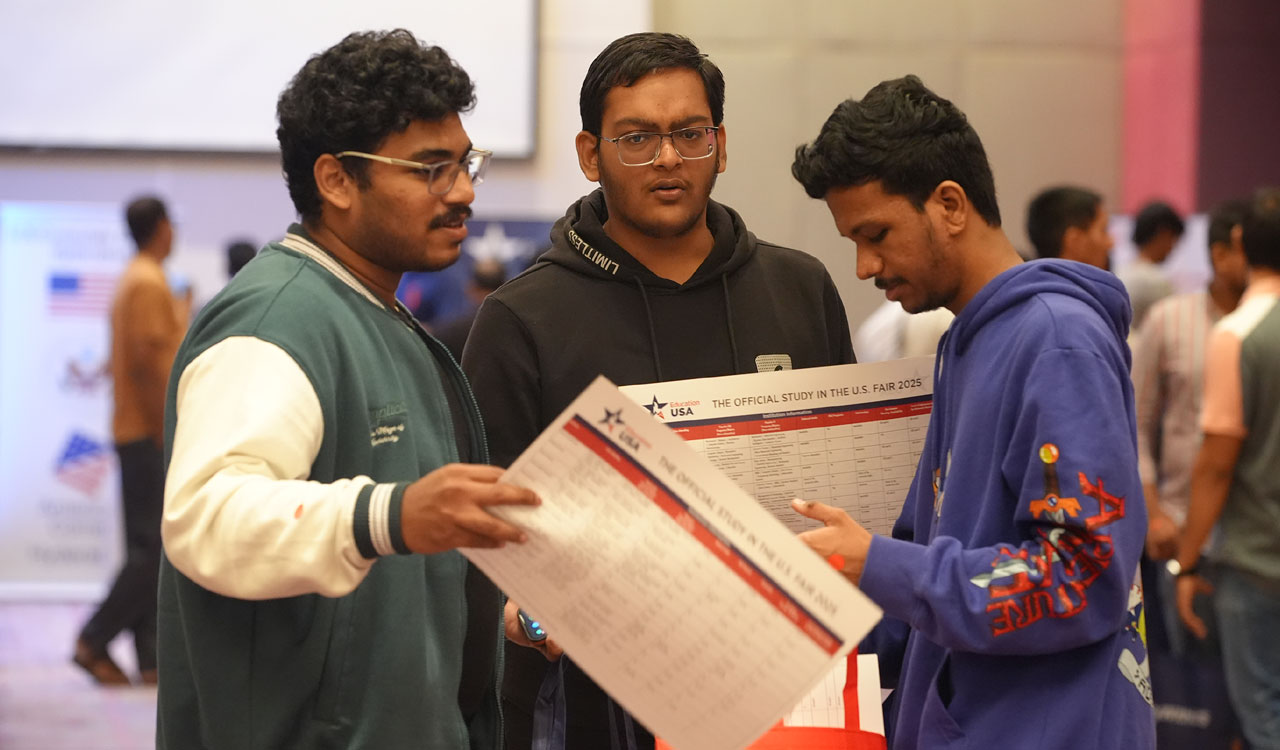Consider financials for your Master’s courses in US
Good academic credentials, work experience, and high scores are some of the criteria for financial support consideration by US varsities

We started talking about EducationUSA’s 5-Steps to applying to master’s programs at US institutions and discussed ‘Step 1: Research your options’ in the last two columns. Continuing our discussion on the 5-Steps, today and in the next few columns, we will describe; ‘Step 2: Finance your studies’.
While selecting universities and before completing the application, it is important for students and parents to consider the financials. This step involves understanding the cost of attending a master’s program at each shortlisted university to accordingly develop your budget, identify available sources of funding, and prepare your financial documents.
The websites of the universities you are considering are good sources to check the tuition fee, cost of living, and other expenses to ascertain the cost of attendance. This information can be found on the admissions page of the university or on the bursar webpage (bursar is the office of budget and finance at a university). Make sure to take note of both the tuition fee and other additional costs, including cost of housing, books and supplies, transportation, health insurance, personal expenses, etc. In addition, make note of whether the tuition is for residents or non-residents (as an international student, you will be paying the non-resident fee). These costs vary based on the type of institution, location, and program of study.
The sources of funding may include funds provided by parents, family members, or other sponsors, financial aid in the form of scholarships, fellowships, or assistantships from the U.S. institution, income through on-campus work and/or training opportunities (CPT/OPT), or external sources of funding through agencies or foundations.
Although financial aid for international students provided by U.S. institutions is competitive, there are different ways a student may seek funding. Many universities offer merit-based scholarships, fellowships, or assistantships. Students should visit university websites to seek information on this aspect. This information can be found on the financial aid page of the institutions. The department or college webpage also includes information on whether they offer financial support to international master’s students. The amount and type of financial assistance offered varies by department, college, university, background and experience of the candidate, and field of study.
The application for financial support to US institutions is typically submitted together with the rest of the application. Nevertheless, students should submit their application package as early as possible to be considered for funding. It is important for students to understand that good academic credentials, work experience, and high scores on standardised tests and English proficiency are some of the criteria for financial support consideration by US universities. To apply for university funding, students should find out which offices/departments provide aid and request application forms from them. Funds can be managed by the graduate school, a university department, or decisions may be made jointly. Students should study all the funding-related materials carefully as the financial aid application process can be rather complicated and time-consuming.
Student may refer to the websites www.fundingusstudy.org, www.finaid.org, and https://educationusa.state.gov/your-5-steps-us-study/finance-your-studies/graduate to seek more information about funding sources for their master’s level study in the United States.
Next week, we will discuss the document submission requirements for financial aid and other details related to Step 2.
— Monika Setia (Regional Officer and EducationUSA Adviser at the US-India Educational Foundation based at the US Consulate General Hyderabad)
Q&A
Q1. What is the difference between a regular master’s program and a professional master’s degree in the United States?
– Dhanraj
Ans. Broadly, master’s programs offered in the United States may be categorized into academic and professional degrees. Academic master’s programs may require/include original research and field investigation, whereas professional master’s degree programs are designed to lead to a particular profession. While academic master’s programs open the pathway for a PhD program for students completing the program, professional master’s degrees are most often “terminal” master’s programs, meaning that they do not lead to doctoral programs. Master of Arts (MA) and Master of Science (MS) degrees are typical academic master’s degrees. Master of Business Administration (MBA), Master of Social Work (MSW), and Master of Education (MEd) are some examples of professional master’s programs.
Academic master’s degrees are generally awarded after two years of graduate studies. But most professional master’s programs take 12-18 months. However, some professional degrees are one-year intensive (like executive MBA) programs.
Q2. My daughter is starting her 12th standard now. Please share academic records of what standards should be submitted to U.S. universities when applying for undergraduate programs?
– Krishna Rao
Ans. The admissions office reviews academic records of student applicants for the last four years, i.e. records from 9th to 12th standard. If the student is currently in 12th, then the records up to 11th standard are to be submitted at the time of the application, along with possible mid-year grades or predicted scores for 12th standard. The transcript should list all subjects/courses that the student has taken during each year of her or his education, with the corresponding marks/grades received in each subject.
Now you can get handpicked stories from Telangana Today on Telegram everyday. Click the link to subscribe.
Click to follow Telangana Today Facebook page and Twitter .
Related News
-
Revanth Reddy’s ‘Engillpiece’ remark draws flak from Osmania University academicians
-
“How to” Guide: Strong university applications
-
Telangana rolls out ‘digital learning’ module for school kids
-
Financing Higher Education in the United States: Have you narrowed down your preferences for a US university into a shortlist?
-
Senate advances resolution curbing Trump’s Venezuela military actions
2 hours ago -
Russian tanker seized by US with 3 Indian crew members on board
2 hours ago -
Telangana: KU Campus police SI, driver caught by ACB while taking bribe
2 hours ago -
Vikram Rathour appointed Sri Lanka batting coach for T20 World Cup
2 hours ago -
BRS accuses Revanth Reddy of targeting university lands for real estate projects
2 hours ago -
GHMC issues new guidelines for Occupancy Certificates in non-high rise buildings
2 hours ago -
Sarfaraz Khan hits fastest List A fifty by an Indian
2 hours ago -
GHMC continues OTS Scheme with 90 percent interest waiver for property tax defaulters
2 hours ago




